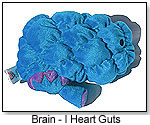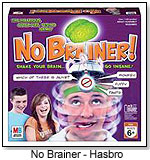 |

Tools:








Event Marketing Guru’s Corner: Activate the Hot ButtonsReach Buyers With a Message That Keeps Their Attention
| “We all realize it’s more difficult to capture the elusive attention span (marketing’s No. 1 job) than ever before.” |
Last month’s column focused on purging platitudes from strategic marketing. Today’s marketers use almost identical marketing messages, so “outside perception” reads all things as equal. Effective strategic marketing must answer this: Why you versus the rest of the pack? What can you say (and back up) that none of your competitors can? That equates to your distinctive value proposition.
 UNDERSTANDING THE BUYER’S BRAIN UNDERSTANDING THE BUYER’S BRAIN
Your strategic marketing message must articulate this proposition in such a manner that it cuts through the clutter, connects … and begins to facilitate today’s longer buying cycles. Therefore, it must use activators and hot buttons to empower the marketing equation to maximize its effectiveness in facilitating purchasing decisions. But first, you should know that there are separate, subconscious functions of the brain that determine what we pay attention to … and for how long:
Reticular Activator: This subconscious part of our brain is like a probe, constantly on the look-out for relevant and important things. It is particularly responsive to the highly familiar, unusual or problematic. When your brain detects any of these on a conscious level, it sends a message to the conscious side of your brain that communicates, “Wake up! There’s something you need to pay attention to.” Most of us have had the experience of buying a “unique” new car only to realize afterward that everyone in town seems to have the exact same model.
Alpha Mode: This state of mind — “auto pilot” mode — automatically runs a pattern that allows your brain to habitually perform tasks without conscious effort. When you drive to work, do you really have to concentrate on how to get there?
Beta Mode: This is the brain’s state of active engagement. When someone shouts your name from across a crowded room, your “reticular activator” pokes your brain out of “alpha sleep” into “beta alert” to engage the subject. If your name is John, and you realize upon hearing your name shouted (and turning to the subject for engagement) that the subject was trying to alert a different John, your brain automatically reverts back to “alpha mode.” This is called a “false beta.”
We all realize it’s more difficult to capture the elusive attention span (marketing’s No. 1 job) than ever before in the most media-dense and attention-span-battered business climate in history. It’s even harder to maintain it (marketing’s No. 2 job).
To drive the marketing equation and be truly effective, today’s marketing must integrate activators and hot buttons.
SNAP OUT OF IT
 An activator snaps a person out of “alpha mode” into “beta mode.” Traditional “creativity and repetition” (C & R) advertising has been using familiar and unusual activators for decades to accomplish this critical marketing phase. Activators are necessary to seize the “beta alert” state of the prospect long enough to use hot buttons to facilitate the subsequent steps in “the marketing equation.” An activator snaps a person out of “alpha mode” into “beta mode.” Traditional “creativity and repetition” (C & R) advertising has been using familiar and unusual activators for decades to accomplish this critical marketing phase. Activators are necessary to seize the “beta alert” state of the prospect long enough to use hot buttons to facilitate the subsequent steps in “the marketing equation.”
When your brain identifies an activator, it subconsciously searches additional clarifying information. If the brain quickly finds important and relevant information, it remains engaged. Conscious bandwidth will be allocated. This means the activator is also a hot button.
GET EMOTIONAL
Hot buttons are words that emotionally appeal to our “desire for gain” or “fear of loss” — the greatest human motivators. Actually, “fear of loss” is a stronger human motivator — psychological research demonstrates that we are “twice as concerned with losing money than gaining it.”
Many financial services companies use hot buttons such as “drain your savings,” “jeopardize your retirement” and “squash your quest for financial freedom.” Conversely, you’ll find positive reinforcement such as “prosper,” “free,” “guaranteed,” “love” and “profit.”
Human nature dictates that we buy on emotion and proceed to justify with logic. People hate to be sold but love to buy. Therefore, it’s our job as marketers not to rant incessantly about how extraordinary our offerings are. Rather, we must facilitate the best possible decisions for prospective customers.
We should do this because it’s (if, indeed, this is true) in the prospect’s best interest, and because the prospect wanted it (facilitated by your mastery of "educational marketing"). This is marketing at its very best!
 Writer's Bio: Writer's Bio: Charles W. Allen is an independent consultant for professional event marketing solutions and specializes in sales training, motivational speaking and maximizing sponsorship sales. He also serves as executive director of the International Economic Alliance, which originated at Harvard University. Read more articles by this author
THIS BANNER IS AN AD:

• • • • • • • • • • • • • • • • • • | • • • • • • • • • • • • • • • • • • |
Back to TDmonthly's front page
|  |
Advertise on TDmonthly

|

